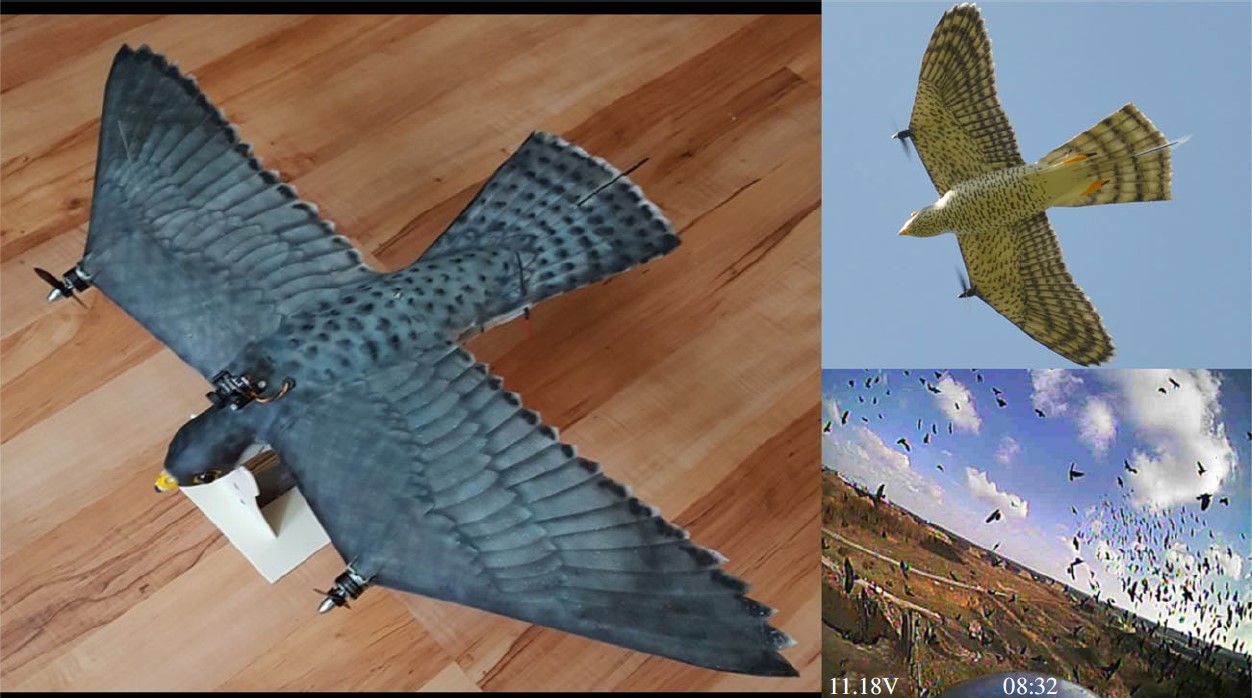Media release
From:
The Royal Society
Deterrence of birds with an artificial predator, the RobotFalcon
Summary: Flocks of birds damage aircrafts and crops worldwide, causing large economic loss. The effectiveness of current deterrence methods is limited, thus new methods are needed. Here we present and test a newly developed RobotFalcon, resembling a peregrine falcon. It chases away flocks fast, prevents early returns, outperforming a drone and conventional methods, with no evidence for habituation. We conclude that the RobotFalcon is a valuable new asset for deterring birds.
Attachments
Note: Not all attachments are visible to the general public.
Research URLs will go live after the embargo ends.

Research
The Royal Society, Web page
The URL will go live after the embargo lifts.
Journal/
conference:
Royal Society Interface
Organisation/s:
University of Groningen, The Netherlands
Funder:
This publication was supported by the Dutch Research Council
(NWO) as part of the project Preventing bird strikes: Developing
RoboFalcons to deter bird flocks (grant no. 14723) of the Open Technology
programme, awarded to CKH. C.C. is currently funded by the
project PRIN 2020 Collective and individual responses of avian flocks to
robotic predators 2020H5JWBH in collaboration with C.K.H.



 International
International



